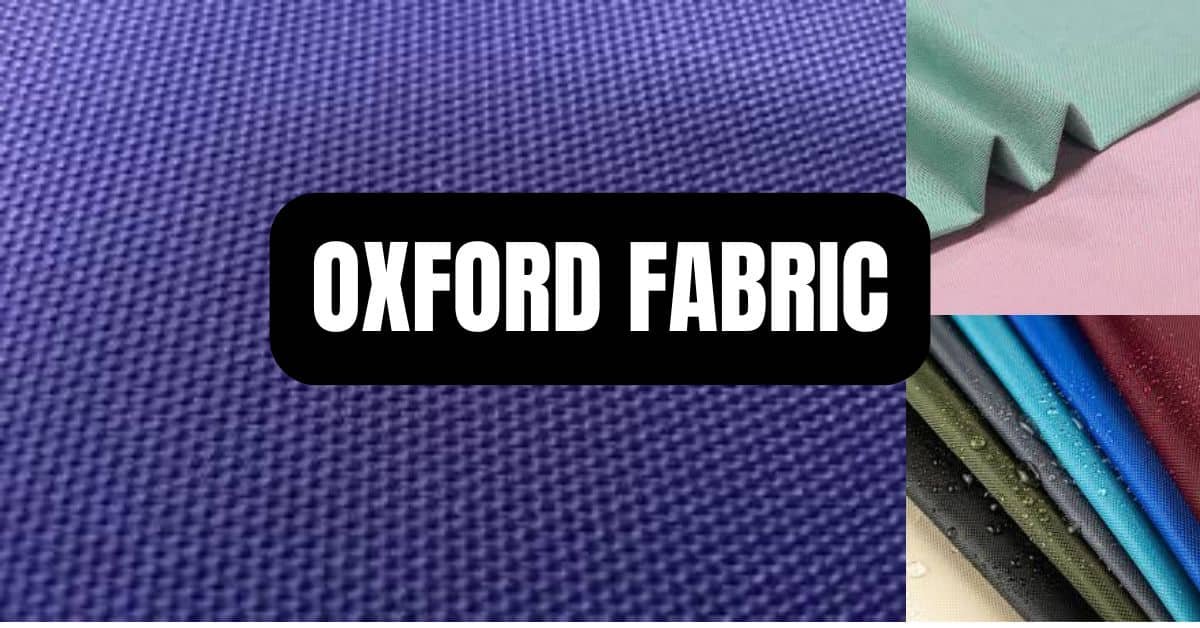For other industries of the world, be it the Interior or the fashion Industry, Oxford fabric serves its purpose as a stylish and at the same time, a durable piece of cloth. But what is Oxford cloth? Its properties may not be tangibly visible to the naked eye, but its benefits and applications should be glaringly obvious. Pretty much everyone who has an interest in fabric, be it fashion or furnishing, ought to know what Oxford fabric is.
Table of contents
What is Oxford Fabric?
Oxford fabric is created with a unique basketweave, which makes it easy to identify as an osmosis fabric. The fabric was created back in the 19th century Scotland and was created in honor of its name after Oxford university. Due to its multifaceted properties, the fabric gained its popularity pretty quickly. Made from cotton and polyester or their mix, it brings good softness with strength for most of the usage.
Properties of Oxford Fabric
Durability and Strength
One feature that greatly sets Oxford fabric apart from others is its durability. A unique feature of Oxford fabrication, its basketweave structure increases its strength and makes it specifically abrasion resistant. This is the reason why this type of fabric is commonly used for clothing types that are worn frequently, such as shirts and other workwear garments.
Texture and Appearance
A somewhat more interesting consideration about oxford fabric is its ability to hold slightly textured surface gratings which makes it visually perfect. The weave gives the garment a slight checkered or speckled design brightening it up while making it simple and classy. This texture not only improves its aesthetics but also adds to its strength. If you are interned to know How to choose perfect fabric for your clothing brand, you may read this article.
Water Resistance
Owing to the processes when treated with coatings or when weaving synthetic fibers as polyester certain types of oxford fabric become resistant to water. Because of these special qualities they can be used as materials for outdoor wear and even waterproof clothing. Though not all oxford fabric are water resistant, most of its variations compared to others have water repellant properties.
Breathability and Comfort
Breathability and Comfort In spite of its potency Oxford fabrication does allow some degree of breathability. A typical case is when talking about Oxford made from cotton which provides air movement and makes it comfortable to wear even in high temperatures. The combination of its soft feel and moderate thickness makes it enjoyable and suitable for shirts and blouses.
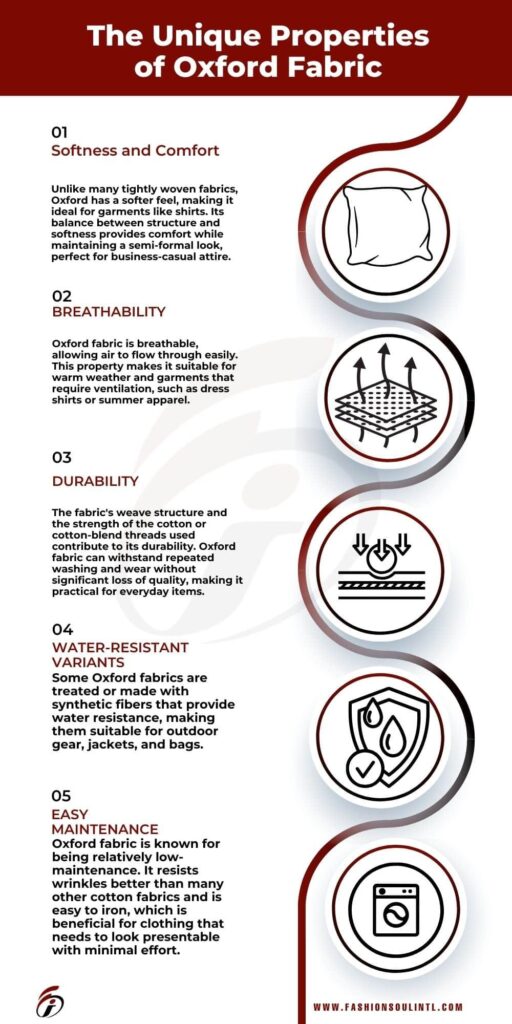
Types of Oxford Fabric
Oxford material is not a one-size-fits-all material. Different types have distinct properties and uses:
Plain Oxford fabric
There is a heavy usage of ‘basketweave’ in domestic cot quite common ‘plain oxford’ — the most popular among them. Usually pure cotton or polyester-cotton blends are used for this fabric which makes it durable and easy to maintain. Read more: what is cotton fabric? Uses, properties and manufacturing process.
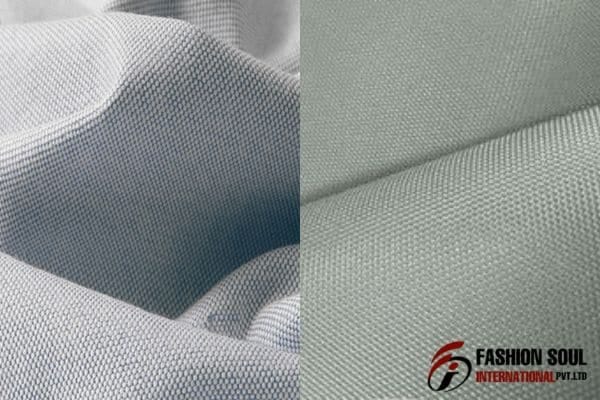
Pinpoint Oxford
The specified pinpoint oxford is usually finer than its plain version, has a narrow weave and is lighter » in weight; it is essentially the same fabric but offers a little more versatility than the ordinary one. It is smooth in texture and is commonly used in making formal shirts due to its classy appeal.
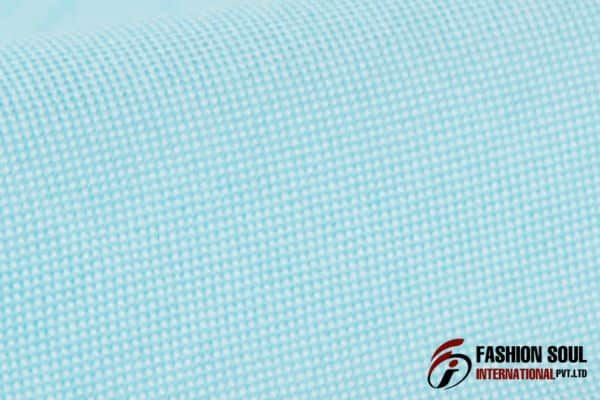
Royal Oxford fabric
Royal Oxford is the supreme in terms of luxury. It’s unique weave produces a beautiful and subtle sheen finish. This type is ideal for dress shirts and designer clothes.
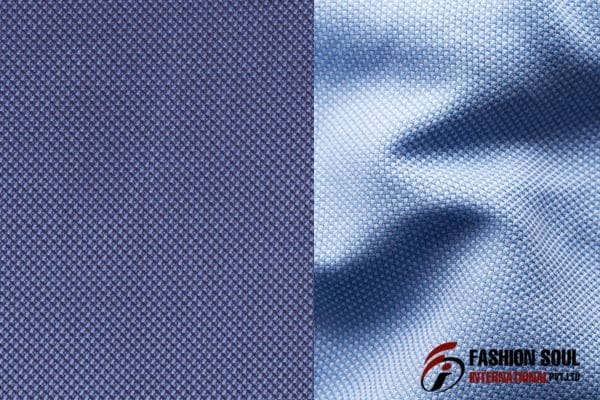
Manufacturing Process of Oxford Fabric
Understanding the manufacturing process of Oxford fabric is key to appreciating its qualities. The process can be broken down into several stages:
Raw Materials of Oxford fabric
The first step concerns the choice of raw materials. The most common is cotton, while its blends with polyester or other synthetics are also widely used due to strength enhancement or some water-resistance properties.
Weaving Techniques of oxford fabric
A distinctive basketweave pattern is created on a loom. The threads used in the warp are interlaced and woven with the threads in the weft in an over-under fashion thus creating a checkerboard appearance. This technique of weaving is very important for the fabric to gain strength and appropriate texture.
Dyeing and Finishing
The fabric is dyed and finished in a later stage that follows weaving. This process is important because it helps in enhancing the overall appearance of the fabric along with certain properties like the ability to retain color and resist water. Relative to some other fabrics, some Oxford fabrics are listed as having protective coatings that increase their resistance to water and dirt. Read Manufacturing process of Oxford Fabrics in detail here.
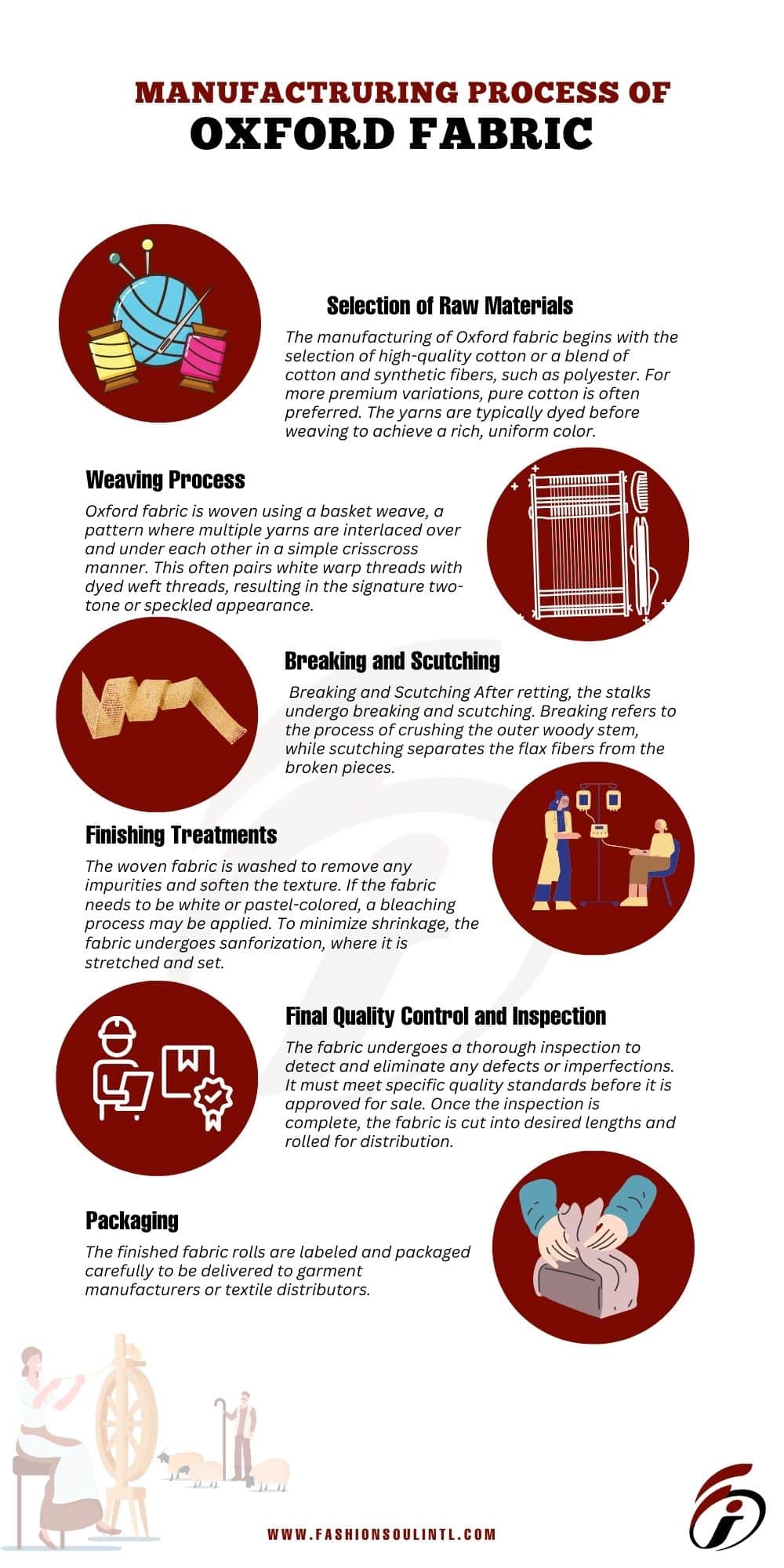
Oxford Fabric Uses
Fashion Industry
One of the most common uses of Oxford material is in the fashion industry. It is particularly famous for creating casual and formal shirts. The combination of strengths provided by this fabric, its durability, breathability and Aesthetic nature makes it a regular fabric used in wardrobes all over the world.
Home and Interior Applications
As indicated, Oxford fabric is not limited to clothing. It is also used for home items such as pillow covers, curtains and upholstery. Its strength and textured look makes it add extra utility as well as aesthetic to the home interiors.
Sportswear and Outdoor Gear
Sportswear and Outdoor Gear Thanks to its toughness and water-resistant properties, Oxford fabric is a popular material in sportswear and outdoor garments. Items such as jackets, backpacks and tents are very much advantages with this fabric as it can stand up to the elements and is easy to care for.
Bags and Luggage
Bags and Luggage Another major area of use of Oxford is in the manufacturing of bags and luggage. The material is strong and water-resistant which makes it quite suitable to products that have to frequent use and be in all weather conditions.
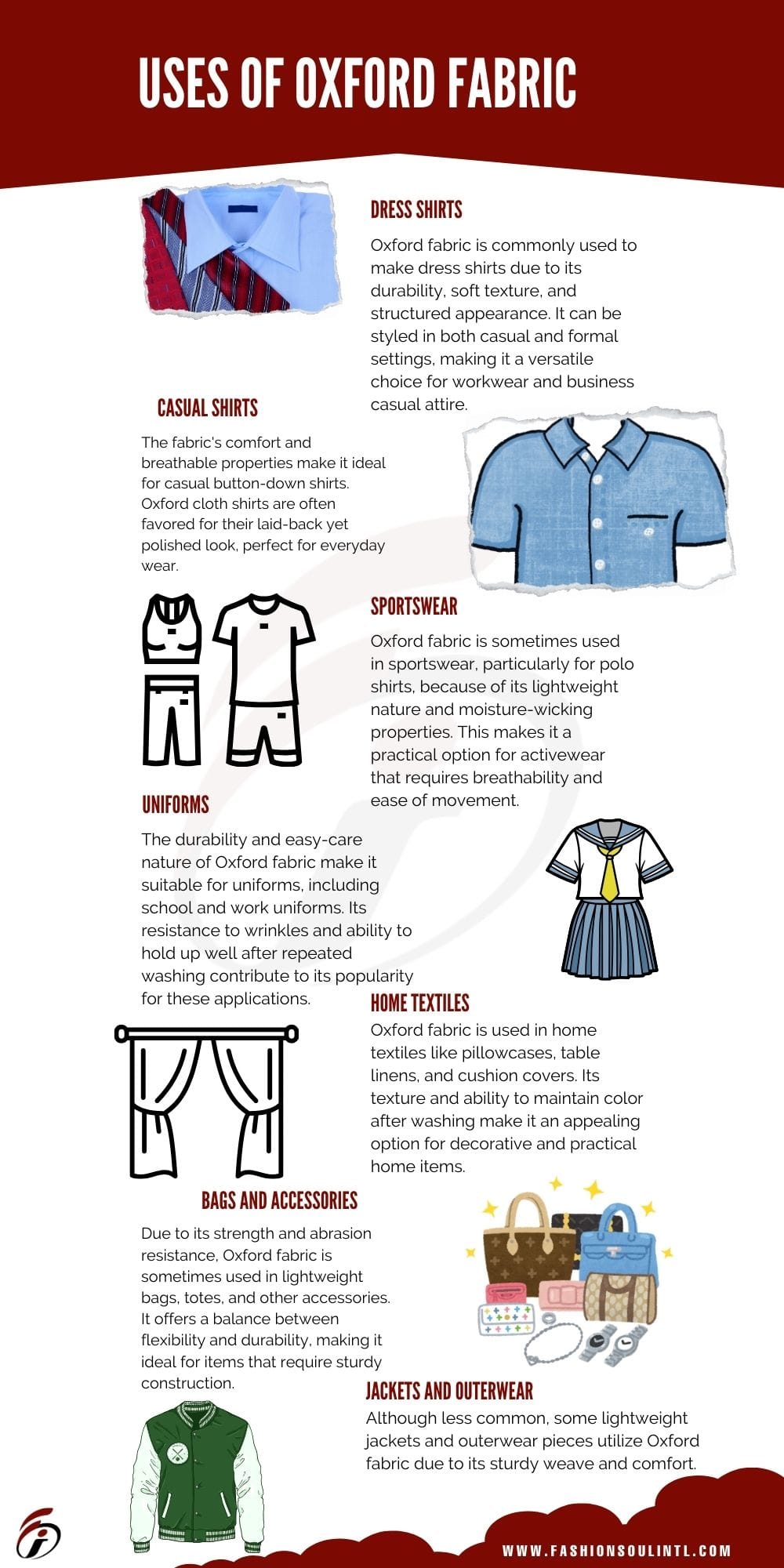
Advantages: What is Oxford Fabric and Why Choose It?
Here’s why many prefer Oxford over other fabrics:
- Long-Lasting: Oxford shirts can last years with proper care.
- Budget-Friendly: Despite its benefits, it remains affordable.
- Stylish: The unique texture adds character.
- Low Maintenance: You can wash and iron it easily.
- Versatile: Works well for casual, business, and outdoor settings.
Once you understand what is Oxford fabric, you’ll see why it’s a popular choice across industries.
Disadvantages: What is Oxford Fabric and What Are Its Limitations?
Like all textiles, Oxford fabric has drawbacks. It’s important to know these to make informed choices.
- Heavier than Poplin: Not ideal for very hot climates.
- Rougher Texture: Some people prefer smoother fabrics.
- Not Super Formal: It’s best for smart-casual, not black-tie.
Still, if you weigh the pros and cons, you’ll agree—what is Oxford fabric? A near-perfect blend of function and form.
Care and Maintenance Tips for Oxford Fabric
Oxford cloth is not very difficult to take care of, but observing some simple guidelines will guarantee it serves you longer:
- Washing: The directions given on the care label should always be followed. In most cases, a machine washing in cold water using a mild detergent, works best.
- Drying: Air drying is the most preferable, but for cotton and polyester blended fabrics, low-heat machine drying is also acceptable.
- Ironing: Do not iron the fabric on a hotter than medium heat. A steam iron would be useful to remove any creases.
- Stain Removal: For the stains, pre-treat with a spot stain remover before the garment is launded.
Comparing Oxford Fabric with Other Popular Fabrics
While Oxford clothes has many advantages, how does it compare to other popular fabrics?
Oxford vs. Poplin fabric
For formal suits, poplin appears to be the ideal option, given its smooth texture and shear weight, in comparison to the oxford. However, due to the fact that the oxford fabric has a much thicker weave, it is likely that its more suitable for daily wear.
Oxford vs. Twill fabric
Twill fabrics generally have a diagonal pattern and are heavier than fabrics such as Oxford. Twill fabrics claim to be wrinkle-free but oxford is softer and is more breathable which makes it a better fit for casual shirts.
Factors to Consider When Choosing Oxford Fabric for Bags, Luggage, and Tents
When choosing Oxford fabric for bags, luggage, and tents, there are several factors that you should consider. These include:
Intended Use: The intended use of the fabric is important when selecting the appropriate Oxford fabric. For example, if you plan to use the fabric for outdoor tents, you need a durable and waterproof fabric that can withstand harsh weather conditions. If you are making bags or luggage, you may require a fabric that is lightweight, durable, and resistant to wear and tear.
Climate: The climate in which the fabric will be used is also an important factor to consider. For example, if you plan to use the fabric in a cold or wet climate, you may need a fabric that is waterproof and has thermal properties. On the other hand, if you plan to use the fabric in a hot climate, you may need a fabric that is lightweight and breathable.
Weight Capacity: The weight capacity of the fabric is also important, especially if you are making bags or luggage. You need to select a fabric that can support the weight of the items you intend to carry without tearing or breaking.
Budget: The cost of the fabric is also a key consideration. You need to select a fabric that is within your budget while still meeting your requirements in terms of durability, weight, and climate suitability.
Overall, when selecting Oxford fabric for bags, luggage, and tents, you need to choose a fabric that is suitable for your specific needs, and that will provide the desired level of comfort, durability, and functionality.
Conclusion
Oxford fabric’s unique blend of durability, comfort, and versatility has cemented its place in various industries. From casual shirts to outdoor gear, its uses are wide-ranging. Whether you are considering it for personal or commercial use, understanding its properties, types, and manufacturing process ensures you appreciate the full potential of this timeless textile.
FAQs!
Some Oxford fabrics, particularly those composed of synthetic fibers or including coatings as a part of standard fabrication, can be water-resistant or even waterproof.
Use the machine to wash the fabric in cold water with a mild detergent, and dry it on air or use a dryer with low temperature setting.
Oxford fabric is widely used in the fashion industry to make shirts, in home decoration to make pillow covers and curtains, and in offshore kits and bags.

